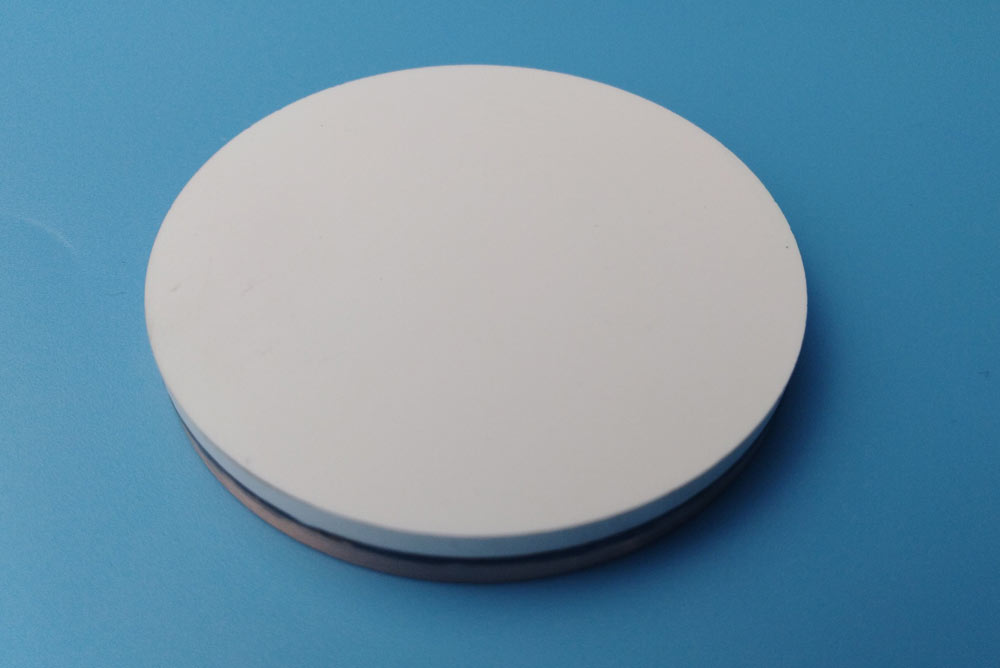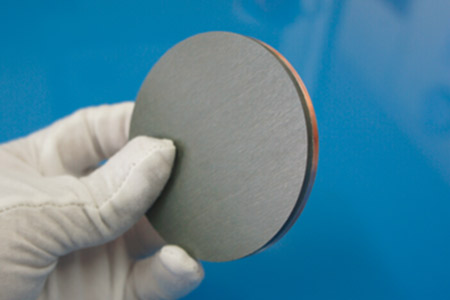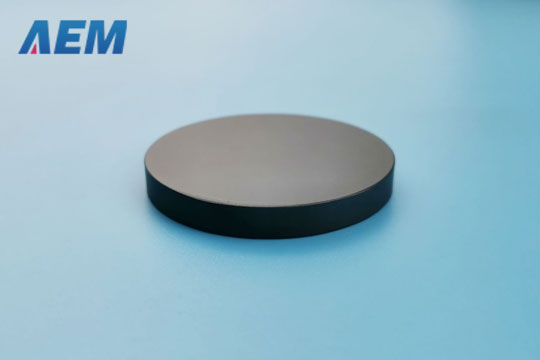Physical Characteristics of Hot Pressed Ceramic Sputtering Targets
301 views, Updated: 2021-09-27
The powder metallurgical process is referred to as sintering. We further described the consolidation steps associated with this manufacturing process, referred to as simple Hot Pressing. What is described is how sintering is an effective heat treatment applied to a powdered compositional material to compact that material to add both strength and integrity without altering the constituent powders' initial composition. The narrative of the simple Hot Pressing mechanism, comprised of a carbon die set containing heating elements, illustrated a typical scenario of how such a mechanism can be used to manufacture an array of different metallic composite materials sputtering targets, ceramic sputtering targets (oxides, nitrides, carbides, sulfides.)
In the application model given for Hot Pressing, we mentioned that heat is applied conductively through heaters placed in or around the carbon mold containing the initial powders to be consolidated. When power is applied to the heating elements, it slowly heats the core of the carbon die and eventually heats the powder within the die cavity. Simultaneously the powder is being mechanically compacted with a hydraulic press through a set of geometrically opposed carbon rams.
This means that the heat being generated from the heating element needs to transfer conductively through the carbon die to the powder being compacted. For circular targets, this means that heat first is transmitted along the powder's outer perimeter within the die and then migrate toward the center of the material over time. This creates a thermal lag within the material being diffused into a solid form or, more importantly, a temperature differential through the material during the sintering process.
The outer perimeter of the material being sintered is exposed to the heat generated from the heating elements sooner and correspondingly longer than within the central region of the material being consolidated. The outer powders diffuse and consolidate before those within the central region. As these outer regions begin to consolidate, the localized density in this material increases, and the localized volume decreases.
Since the pressure supplied to the material is applied from the carbon rams unidirectionally across the entire face of the target surface, a thermal diffusion gradient is effectively taking place over time. The result is a certain degree of non-homogeneity in density within the consolidated target. This can result in differential stresses within the target material as well as a variance in sputter yields during deposition. The plasma supplies a fixed amount of energy-containing a constant velocity of impinging ions contained within that plasma at any given power density. Ions with a fixed momentum strike the target surface uniformly.
However, if the target material consists of atoms with varying bond energies, a differentially varying sputter yield occurs. More or less, atoms of target material break away from the target surface as a function of ion collisions based on the location of impact within the target surface. Effectively, this could alter the nucleation and growth of the thin-film produced and thus alter the resultant film's physical properties and performance characteristics.
These effects are subtle and not necessarily well pronounced. Like most process control conditions, the effects are very much dependent upon the actual chemical composition and physical properties of the target materials being sputtered and the process conditions associated with the deposition. In general, such subtle effects are less of a concern for geometrically smaller ceramic sputtering targets where the gradients are less pronounced. In larger ceramic sputtering targets, where the temperature gradients are larger, and the thermodynamics and kinetics of the diffusion process are more varied, higher internal stresses within the target may also cause cracking within the target (again depending on the mechanical properties associated with the composition being consolidated) or even spalling when the hydraulic pressure in the sintering operation is released.
There are variations within Hot Pressing technology that can reduce or even eliminate. It is sufficient here to say that, based on the phenomenon described above, care should always be taken during the deposition process to maximize the cooling efficiency of cathode assembly through to the target material and properly pre-condition all sputtering targets before deposition onto a substrate.
LATEST NEWS
2024-05-24
2023-10-17
2023-10-17
2023-09-15
2023-09-15
 +86-731-89578196
+86-731-89578196
 Alina@aemproduct.com
Alina@aemproduct.com
















